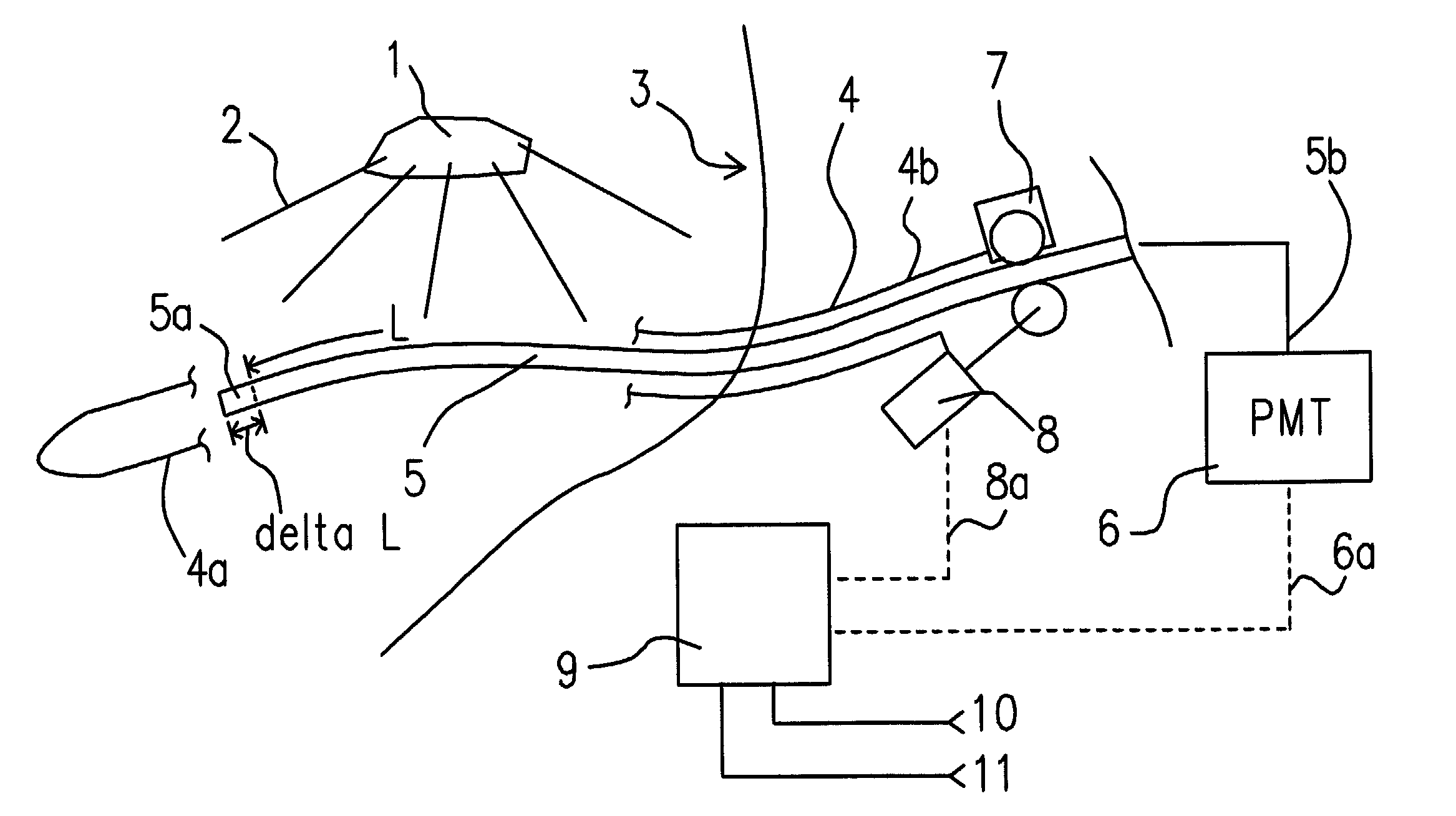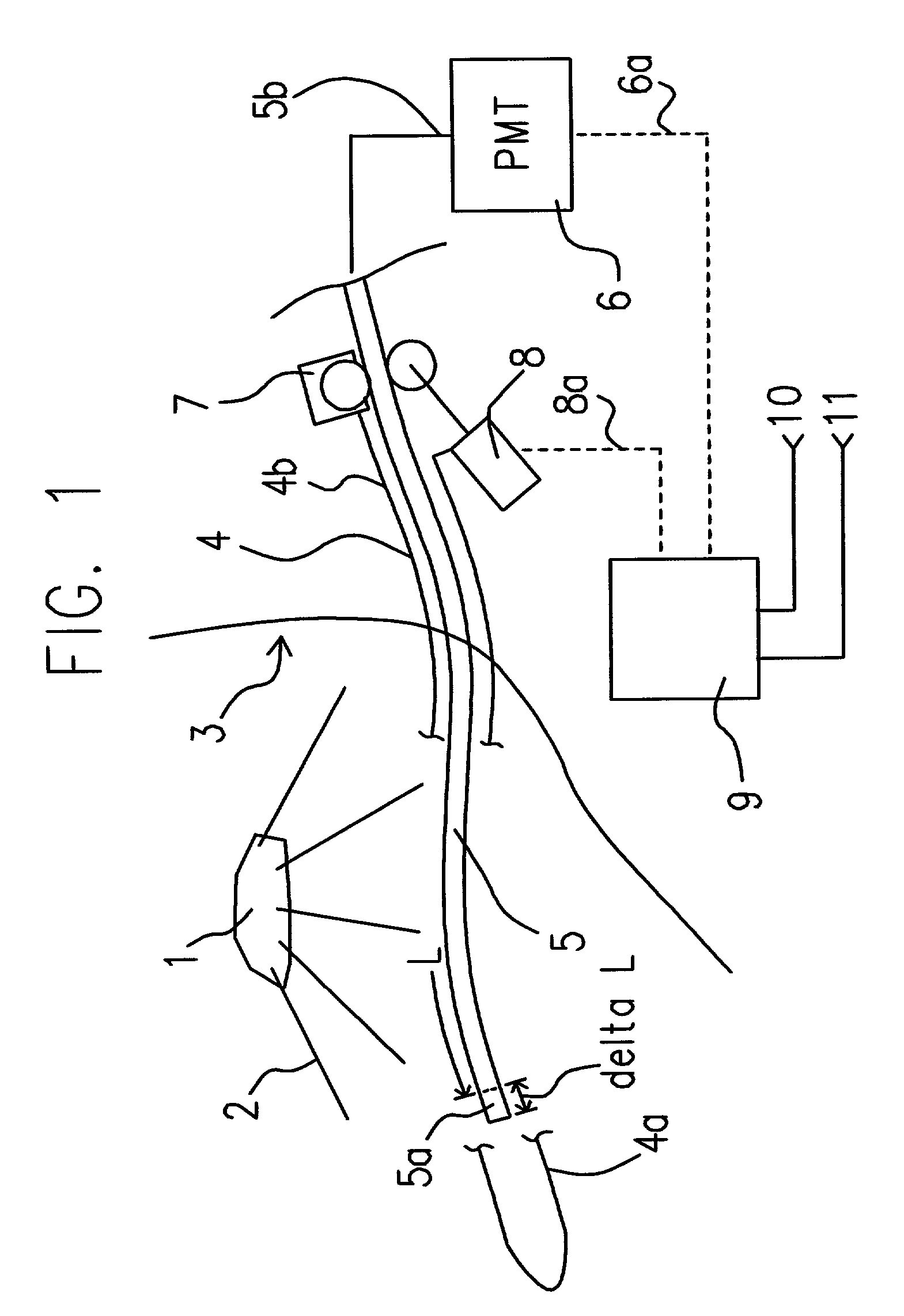Radiation measurement within the human body
a technology of radiation measurement and human body, applied in the field of radiation measurement within the human body, can solve the problems of re-closing of arteries, difficult to direct the measurement of internal body radiation, and complicating the use of scintillating fibers for therapeutic radiation, and achieve the effect of small diameter
- Summary
- Abstract
- Description
- Claims
- Application Information
AI Technical Summary
Benefits of technology
Problems solved by technology
Method used
Image
Examples
Embodiment Construction
[0038]Referring now to FIG. 1, there is shown schematically a radiation source 1 producing a radiation field 2 within a human body, the outline of which is indicated at 3. The radiation source 1 may comprise an internal or external High Dose Rate source (such as are used in HDR afterloader therapy or external beam therapy), an internal Low Dose Rate source (such as an implanted brachytherapy seed or radio-pharmaceuticals), or any other radiation source used in treating the human body. A guide channel 4 (such as a catheter or hypodermic needle having an internal diameter of between 0.3 and 1.1 mm and an external diameter of between 0.4 mm and 1.5 mm, shown only partially in FIG. 1) is inserted into the human body 3 and passes in the vicinity of the radiation field 2. The guide channel 4 (which provides very little or no radiation shielding) has an insertion end 4a (which is inserted into the human body) and an external end 4b (which remains outside of the human body). The position of...
PUM
 Login to View More
Login to View More Abstract
Description
Claims
Application Information
 Login to View More
Login to View More - R&D
- Intellectual Property
- Life Sciences
- Materials
- Tech Scout
- Unparalleled Data Quality
- Higher Quality Content
- 60% Fewer Hallucinations
Browse by: Latest US Patents, China's latest patents, Technical Efficacy Thesaurus, Application Domain, Technology Topic, Popular Technical Reports.
© 2025 PatSnap. All rights reserved.Legal|Privacy policy|Modern Slavery Act Transparency Statement|Sitemap|About US| Contact US: help@patsnap.com


